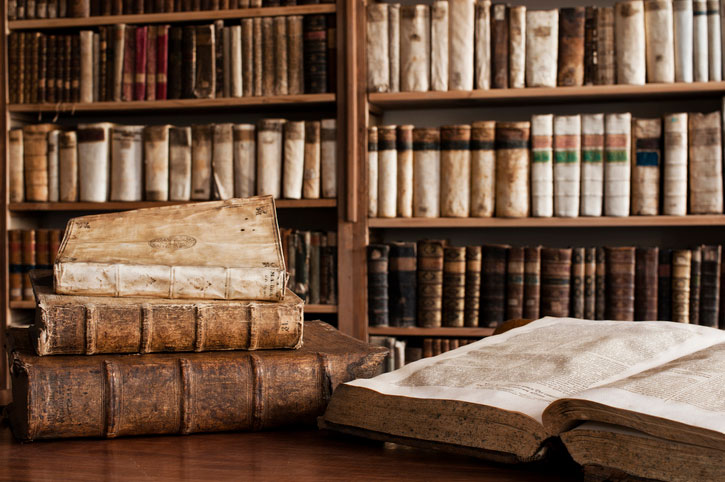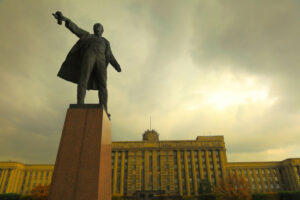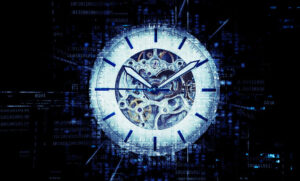

The historical record is anything that can inform us about the reality of past. Studying history in the context of the liberal arts is a great way of gaining insight into the historical record. Topics like these all intersect with history, and are all components of a liberal studies education:
- Religious writings
- Works of philosophy
- Painted portraits
- Cultural myths
- Classical and folk music
- Theater
- Struggles for social justice
- Scientific developments
But how can someone relying on the historical record be sure they looking at an accurate record of history? What if a portrait of a famous noble was embellished? What if a lieutenant writing about his victory exaggerated his accomplishments? What if an entire race or class of people is considered inferior and left out of history altogether; how can history be written about them? How can a historian avoid their own biases?
These are the questions historians must grapple with when they’re writing history. The more information there is in the historical record, the better. And because the liberal arts is rich with information across a wide range of formats, it provides an ideal context for historians.
Historical Revisionism – The Liberal Arts Can Reveal Historian Bias
 It’s hard to judge the intent of historians when it comes to verifying the accuracy of the events they describe. Are they acting in good faith, serving as willing propagandists, or just swept up in the zeitgeist of their time and telling an exaggerated tale.
It’s hard to judge the intent of historians when it comes to verifying the accuracy of the events they describe. Are they acting in good faith, serving as willing propagandists, or just swept up in the zeitgeist of their time and telling an exaggerated tale.
After the Bolshevik Revolution and the founding of the Soviet Union, historians in universities across the USSR began writing history books based on their new “discoveries” about class conflicts stretching back to the pyramids in Egypt. Today in China historians describe the killing of perhaps thousands of protesters in 1989 Tiananmen Square as the “June Fourth Incident,” while outside of China, everyone refers to it as the Tiananmen Square Massacre.
19th century American historians described white settlers moving westward as bringing civilization to the native peoples of the land. When it came to American slavery, many wrote that African Americans didn’t mind it, or even enjoyed it.
This is where a well-rounded liberal studies education can come to the rescue. The liberal arts provide a whole-context historical record that historians can use as a framework to analyze and describe events like Communism in the USSR, the killing of protesters in China, and even topics that hit closer to home like the evils of ideas like Manifest Destiny and slavery.
Writing the History of Marginalized and Underrepresented Groups – The Liberal Arts Can Help
Historically it’s common for one group of humans to marginalize another, be it for political, ideological, classist, racial, religious, or some other rationale. Considering the maxim that history is written by those who hold power, it’s a downright challenge for historians to write about groups of people who were historically marginalized.
We know a great deal about Roman culture, history, and conquests because their historians recorded endless details on these topics. That is, details about the Roman elites. They are the ones who could afford to pay historians to write their history, and naturally historians gave them due attention.
When it comes to Roman slaves, Roman women, Roman commoners, Roman immigrants, or the people the Romans were subjugating, much less is written. In fact the Roman and non-Roman world is very black-and-white to the historians of those days: there was civilization (Romans) and barbarians (non-Romans).
Now just imagine the task of writing about transgender Romans. Or for that matter, transgender people in any period of history. A minority and outlier at any time by a common social-norms definition, trans people in history are essentially absent; for the most part they were ignored by historians.
This is where a liberal arts perspective can be helpful, taking a whole-picture approach to the analysis of the historical record. The liberal arts can draw from the archaeology, sculptures, theater, graffiti, and philosophical debates of the Roman times.
For the historical record of trans people, the liberal arts can look to many other sources besides written ones. Like paintings for example. Gerda Wegener was a Danish painter born in 1886. She moved to Paris with her husband and became popular selling paintings and sketches of chic petite women.
In 1913 the world of art was shocked to discover that Wegener’s favorite model for her paintings was her husband, who had taken to the habit of wearing women’s clothing. Wegener’s paintings still exist today, and offer clues for historians about what it was like to be trans over a century ago.
An Exciting Time for a Multi-Disciplinary Liberal Arts Approach to History
 There’s never been a more exciting time to be an historian than the present. Today historians have a wealth of resources at their disposal for analyzing the historical record:
There’s never been a more exciting time to be an historian than the present. Today historians have a wealth of resources at their disposal for analyzing the historical record:
- Advances in computing and technology have drastically improved the field of archaeology.
- Today computers can use optical character recognition (OCR) to transcribe ancient manuscripts and use artificial intelligence for translation.
- Computers can scan satellite imagery of the earth and detect new burial mounds.
- Historians across the world can communicate online with each other instantaneously, including attending virtual conferences.
- Archives, artifacts, photos, and 3-D models of historical materials can be made available and cataloged online for analysis by historians anywhere.
- Whereas marginalized people in the past were absent from history, today virtually everyone leaves a digital footprint that historians can use for analysis.
The ways in which historians present their data and findings has also been revolutionized by today’s technology. Historians can develop interactive exhibits in museums featuring audio, video, and even moving parts. Today museums are offering virtual online tours of their exhibits to visitors from the comfort of their own homes, anywhere on earth!
And going forward into the future, the liberal arts will continue to serve as the creative framework that history needs to be fully understood in the big-picture context.






